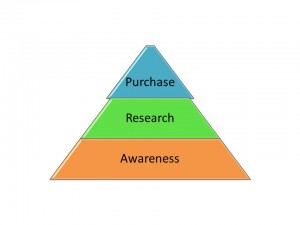A former colleague left her assisted living marketing role a while back to work as a VP of Sales for her local ABC affiliate. Shortly after, she tried to recruit me as a sales manager. I politely declined. I wasn’t interested in “sales”, I explained to her. She reminded me that as a Regional Manager of Market Development, my job WAS a sales manager position. “Sales is different in the senior living industry”, I told her. Her reply? She’d come to realize sales teams in health care were arrogant. We didn’t think anything applied to us because our industry was “different”. I will admit it. At the time she said it, it ticked me off.
I was reminded of that conversation when trying to help a colleague – a veteran in assisted living – understand how important it is to have a website that is a hub of compelling, engaging content. Not just a site that lists community locations, phone numbers and services. Nope, she said, families didn’t want anything more. Her reason? You guessed it. Our industry is “different”.
Are assisted living and home care websites just a directory?
Her theory is that people who use an assisted living or senior care website of any kind, use it more like a directory or the yellow pages. Got dementia care? Put that on the services list on the site. Take pets? Yep. Stick that on there too. Fact, fact. Feature, feature. That’s what families are looking for from our sites, she said.
To start with, she is right. Families do use a senior care website her way. But only once they have reached the “Research” or “Purchase” phases of the buying cycle. And as much as some of us hate to admit it, the buying cycle does apply to senior care.
The providers who have accepted that have built sites that engage families at the first two stages of the sale and not just the last one. They understand families jump on Google to research anything and everything these days. For an industry as complicated as ours, the learning curve is steep. They first have to figure out what assisted living is before they can decide if it is what they need.
So how do you engage families early in their search? Stop back next week and we will share some insight.
